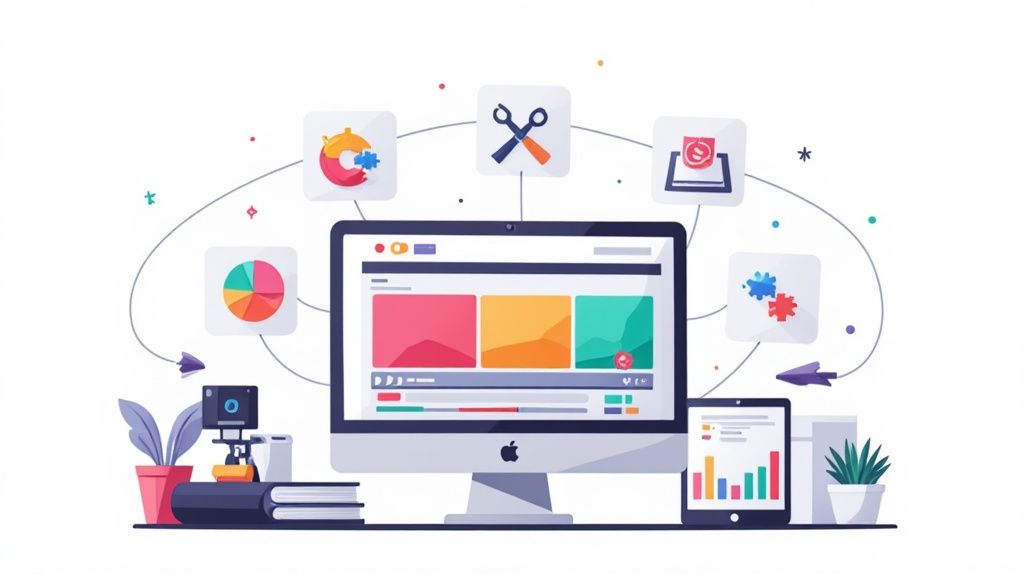Best Free Tools to Create Gradient Meshes & Organic Blobs


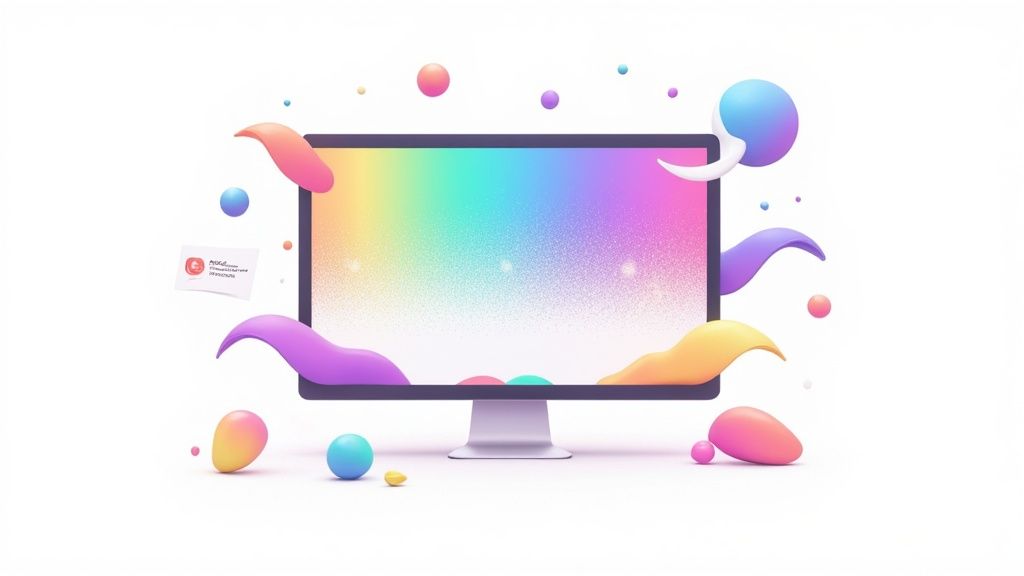
Gradient meshes and organic blobs are dominating modern design, adding depth, fluidity, and a touch of realism to websites, apps, and branding. These elements move away from harsh lines and flat colors, creating visuals that feel more natural and engaging. Embracing these organic elements can significantly enhance various visual assets, from website backgrounds to social media graphics like optimized YouTube banners. But you don't need expensive software or advanced design skills to achieve this popular aesthetic.
We've curated and tested the definitive list of the best free tools to create gradient meshes & organic blobs, empowering you to produce stunning, professional-quality assets. This guide cuts through the noise to help you find the right solution for your specific needs, whether you are a designer needing precise vector control, a developer looking for copy-paste CSS, or a marketer creating quick social media graphics.
This resource provides a detailed breakdown of each tool, complete with screenshots and direct links. We'll dive into each option, analyzing its true capabilities, practical use cases, and honest limitations to help you choose the perfect tool for your next project's workflow.
1. Inkscape
Inkscape is a powerhouse in the world of free vector graphics editors, offering one of the most robust, native implementations of SVG mesh gradients. Unlike simplified web generators, Inkscape provides granular, professional-grade control over your creations. This makes it an ideal choice when you need to craft complex, editable gradient meshes for projects that demand precision, such as print materials, detailed web illustrations, or assets for game development. Its strength lies in treating meshes as first-class vector objects.
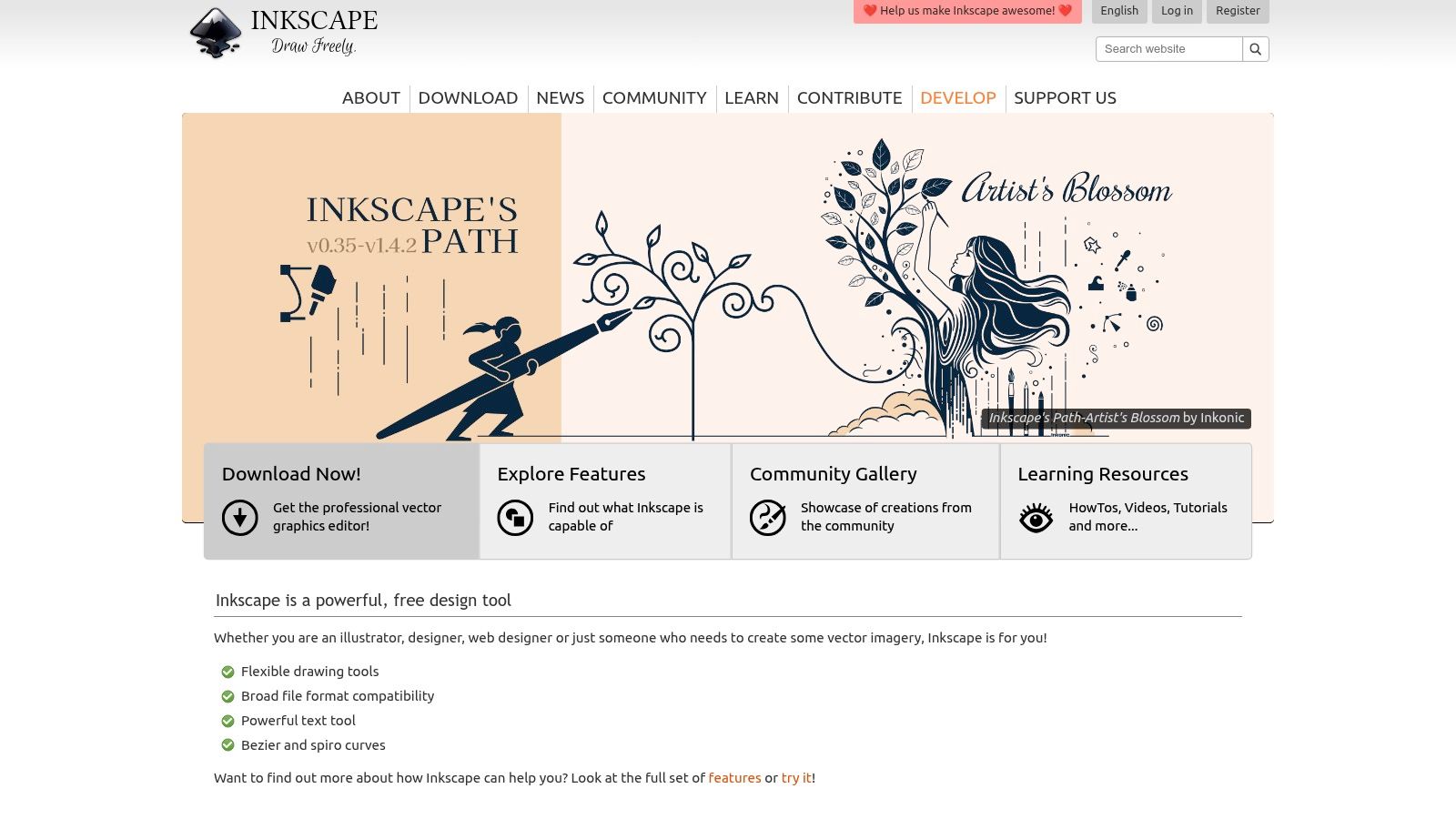
The platform is completely free and open-source, available on Windows, macOS, and Linux without any subscriptions or hidden fees. For designers and marketers who need to integrate high-quality vector assets into a larger workflow, Inkscape is an essential tool. Mastering its mesh tool is a key step in a professional design process in graphic design, allowing for sophisticated visual effects without vendor lock-in.
Key Features & Assessment
Website: https://inkscape.org
2. Haikei
Haikei is a versatile, browser-based generator suite designed for creating beautiful organic shapes and soft, mesh-like visuals in seconds. It excels at producing assets like blobs, waves, and blurry gradients that are perfect for modern web backgrounds, social media graphics, and presentation slides. Where dedicated vector editors offer deep control, Haikei prioritizes speed and creative exploration, allowing you to generate and export stunning visuals with minimal effort.
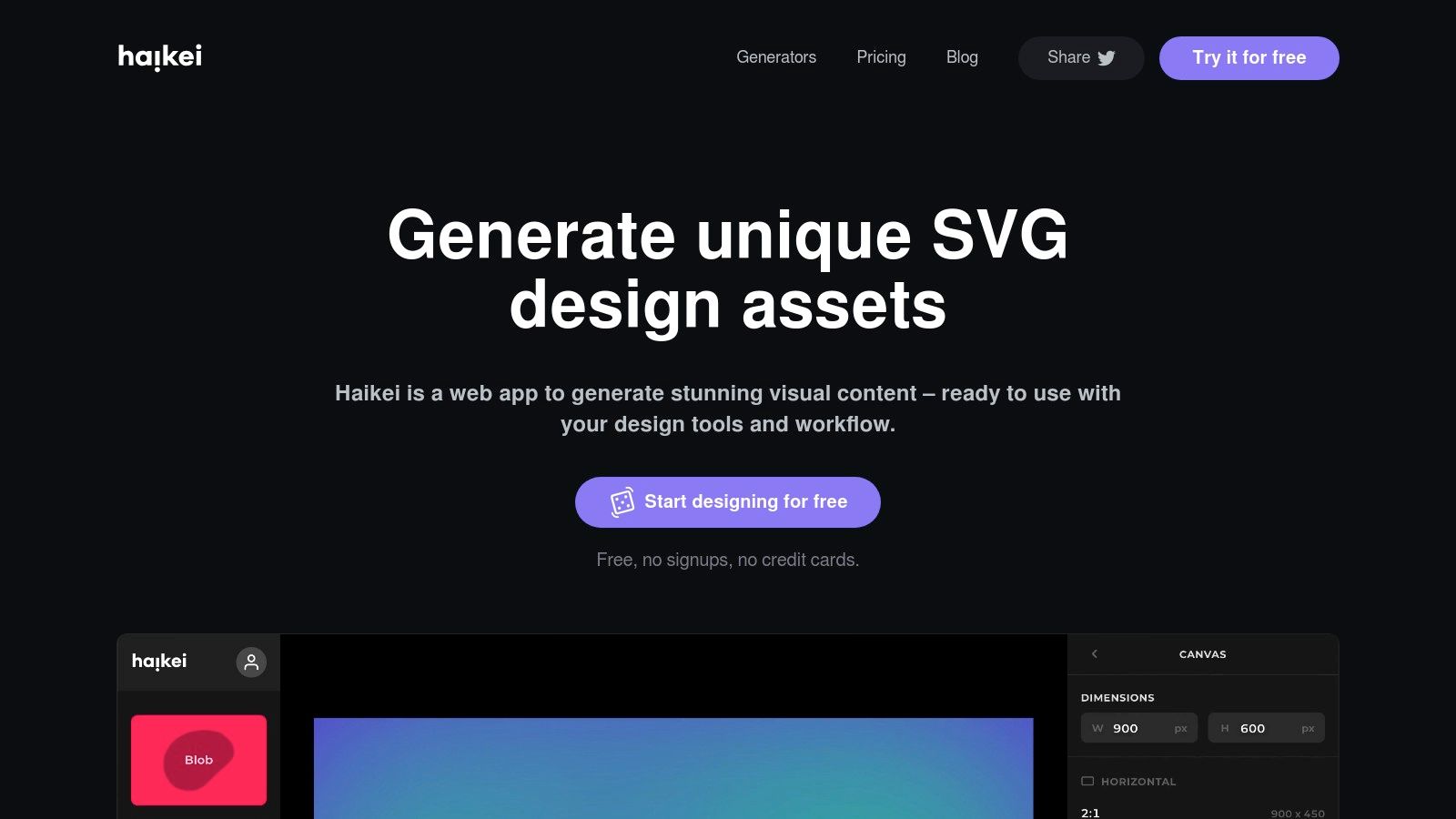
The platform operates on a freemium model, with its core generators available for free without an account. This makes it an incredibly accessible tool for rapid prototyping. For marketers and designers who need to quickly produce on-brand assets, Haikei is invaluable. Its integration with popular color palette generators allows for seamless brand alignment, turning abstract concepts into tangible designs almost instantly.
Key Features & Assessment
Website: https://haikei.app
3. Blobmaker
Blobmaker is the quintessential tool for when you need simple, organic SVG blobs with zero friction. It’s a lightweight, browser-based generator focused on one task: creating unique, smooth shapes instantly. This makes it an ideal starting point for designers who need a quick background element, a mask for an image, or a base shape to import into a more advanced editor for further refinement. Its strength is its immediacy and simplicity.
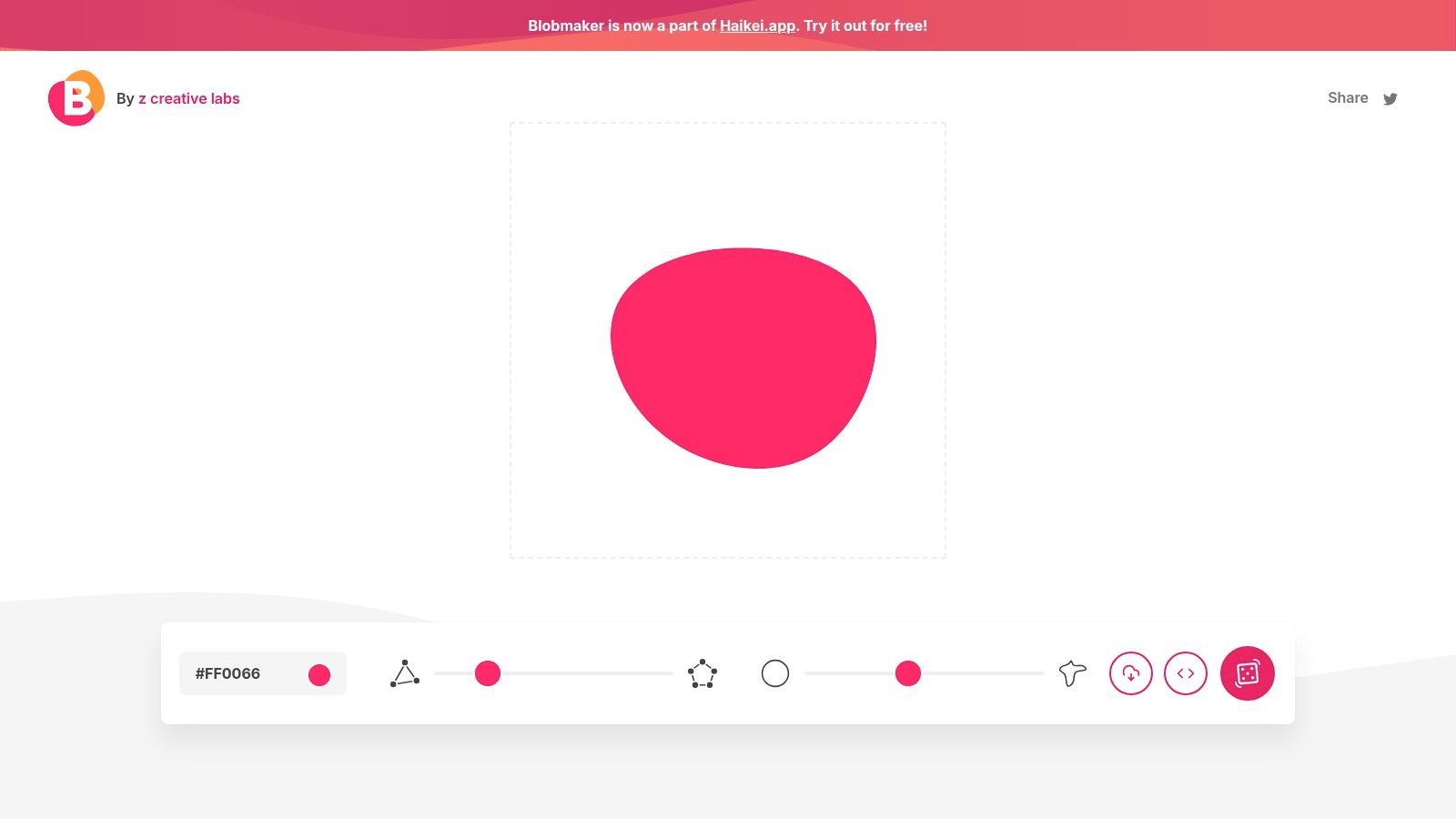
The platform is completely free, web-based, and requires no account or installation. You can generate, customize, and export a clean SVG in seconds. For marketing teams looking to quickly add visual flair to landing pages or social media graphics, Blobmaker is an invaluable resource. These generated shapes pair well with assets from libraries offering free icons and illustrations, allowing for the rapid creation of cohesive designs without starting from scratch.
Key Features & Assessment
Website: https://www.blobmaker.app
4. Mesh Gradients for Figma
While most tools on this list are standalone, Mesh Gradients for Figma is a dedicated plugin that brings advanced mesh capabilities directly into the design world's most popular collaboration tool. It's built for teams who live in Figma and need a more powerful, integrated workflow than what generic gradient plugins or Figma's native tools can offer. Its primary advantage is eliminating the need to switch applications, keeping the entire design process fluid and centralized.
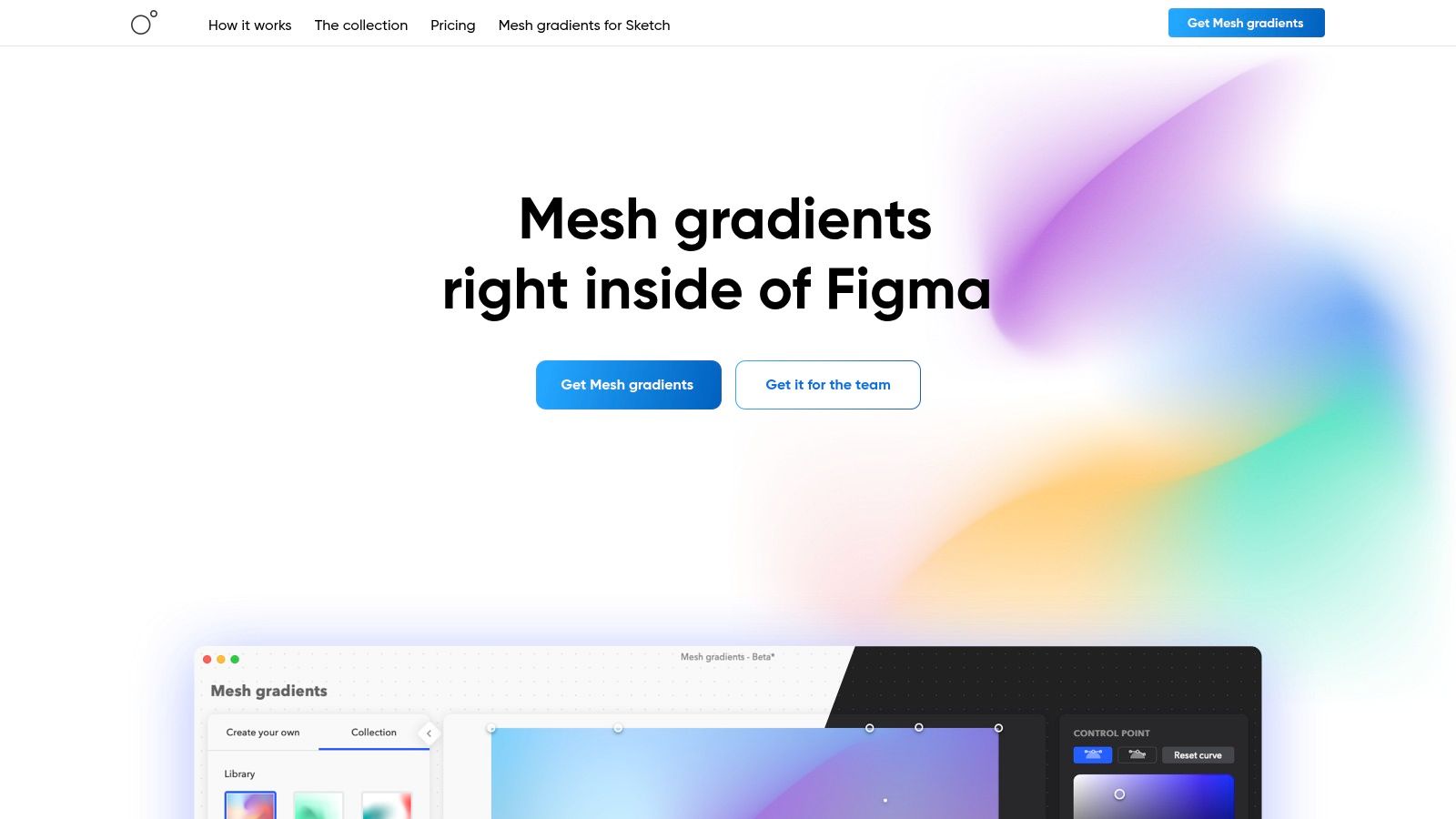
This plugin is a premium tool, available for an annual subscription of $9.99 per designer. While it's not free, its inclusion here is for teams where the efficiency gains of an integrated workflow outweigh the cost. By embedding mesh creation in Figma, it helps keep modern design systems cohesive, which is a key element in current design trends and news. It's a prime example of a specialized tool solving a specific problem within a widely-used ecosystem.
Key Features & Assessment
Website: https://www.meshgradients.com/figma
5. MagicPattern — Mesh Gradients
MagicPattern is a sleek, browser-based tool designed for speed and simplicity. It excels at helping marketers and designers generate beautiful, mesh-style gradient backgrounds without the steep learning curve of professional vector software. Its primary strength lies in its intuitive interface, which allows for rapid iteration. You can quickly add color points, adjust their spread, and apply post-processing effects like blur and grain to achieve a modern, atmospheric look.
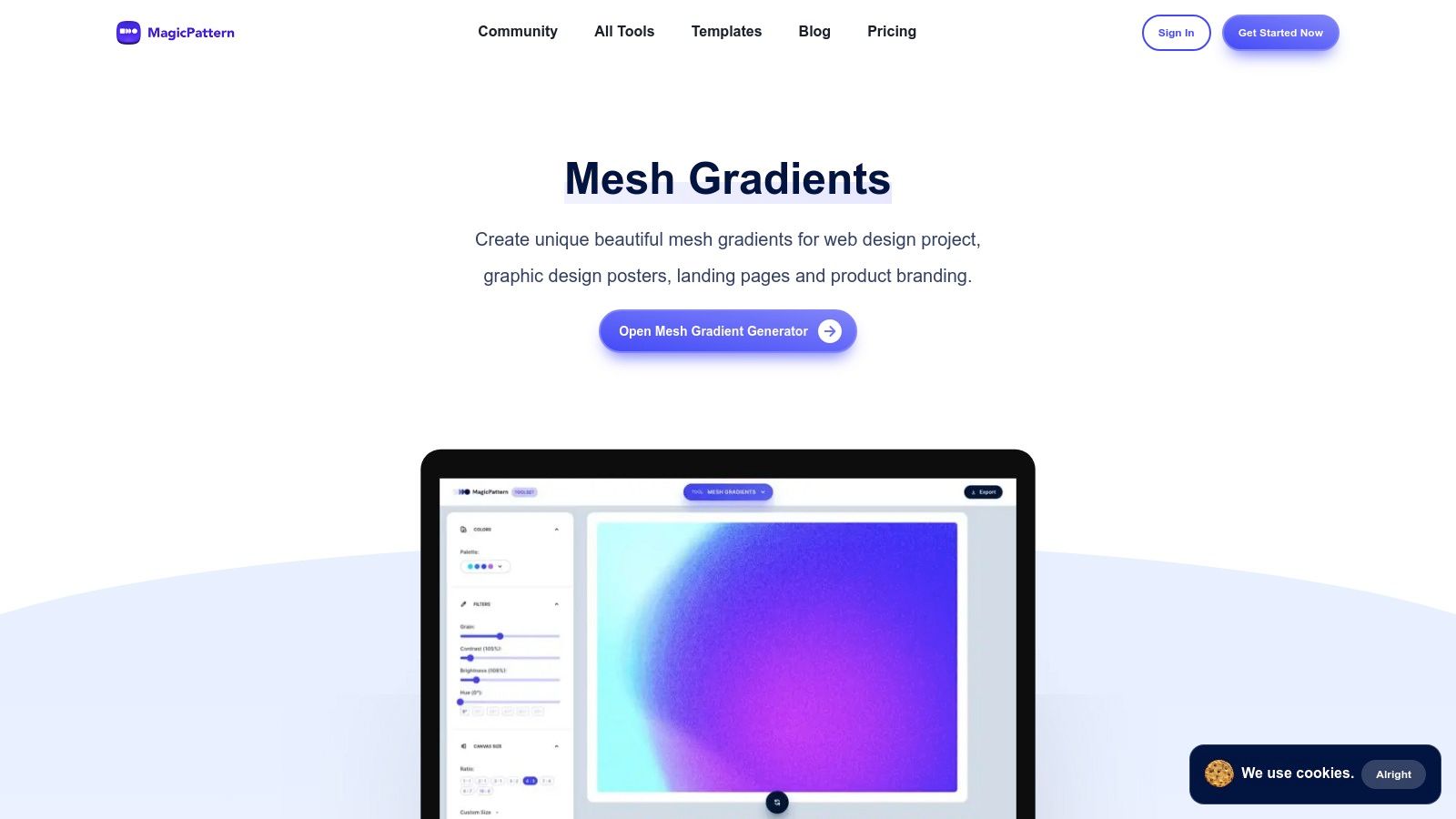
While the core generator is free, exporting high-resolution images or accessing advanced features requires signing up or a paid plan. The platform is ideal for creating static assets like social media backgrounds, website hero images, or presentation slides. However, it's important to note that MagicPattern outputs raster images (PNG/JPG), not editable SVG meshes, making it less suitable for projects requiring scalable vector graphics. It's one of the best free tools to create gradient meshes for quick, high-quality visual assets.
Key Features & Assessment
Website: https://www.magicpattern.design/mesh-gradients
6. Gradientverse — Mesh Gradient Generator
Gradientverse offers a developer-focused approach to creating mesh-style backgrounds. Instead of generating a true SVG mesh, this web tool cleverly simulates the effect by layering multiple radial gradients. This method is perfect for web developers and designers who need lightweight, code-ready backgrounds that can be implemented directly into a project with a simple copy-paste, bypassing the need for image files.
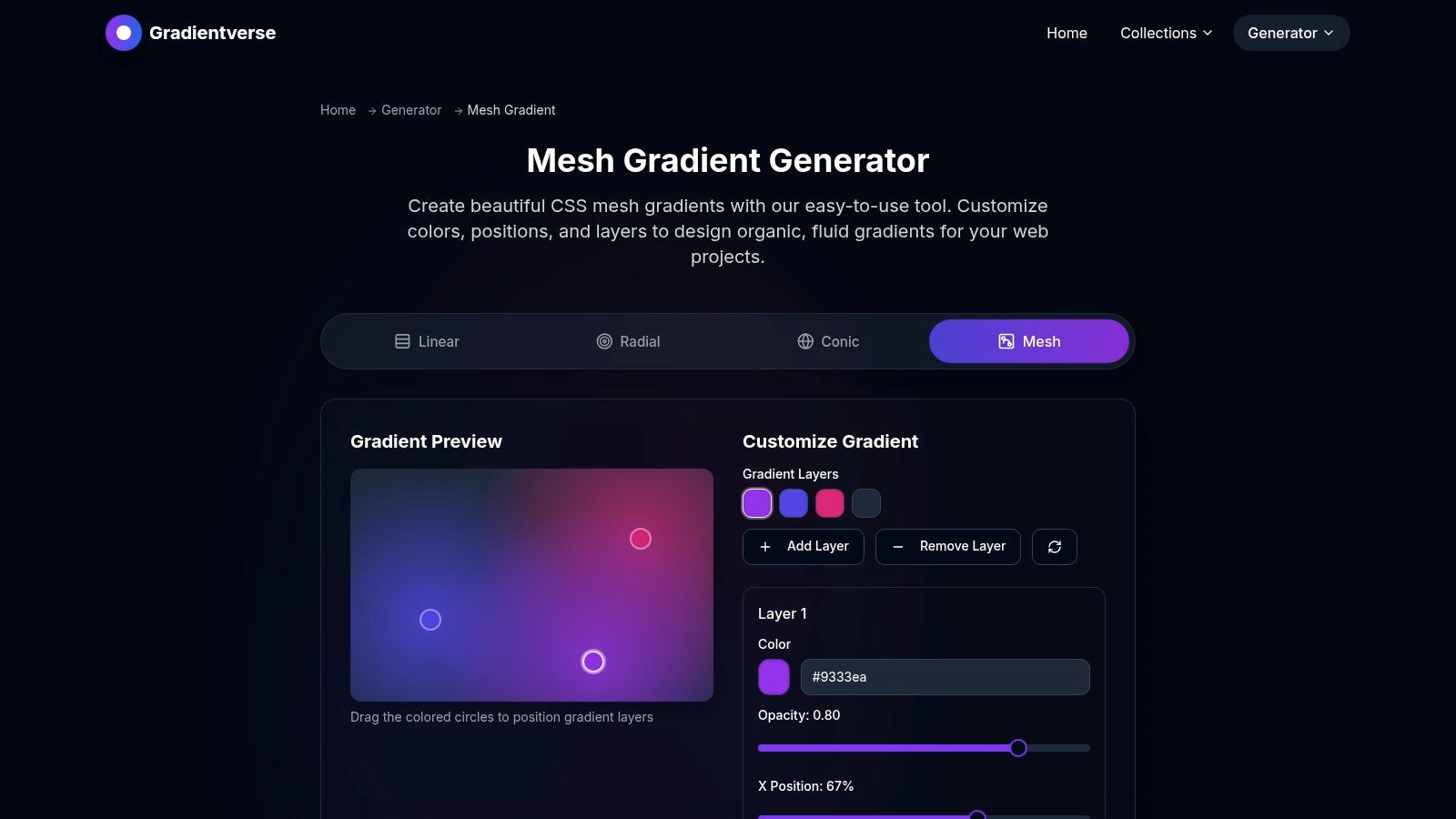
The platform is entirely free and accessible in the browser without requiring an account. Its standout feature is the one-click generation of both standard CSS and Tailwind CSS snippets, making it an incredibly efficient tool for front-end development workflows. For marketers and founders who need to quickly style a landing page or web app, Gradientverse removes the friction between design and implementation, delivering a fast and practical solution for modern web aesthetics.
Key Features & Assessment
Website: https://www.gradientverse.com/generator/mesh
7. Colorffy — Mesh Gradient Generator
Colorffy's Mesh Gradient Generator strikes an excellent balance between visual creativity and practical developer handoff. This browser-based tool is specifically designed for creating web backgrounds, allowing you to place color points on a canvas and instantly see the result. It bridges the gap between design ideation and implementation by providing clean, copy-and-paste CSS code, making it a favorite for rapid prototyping and web design workflows.
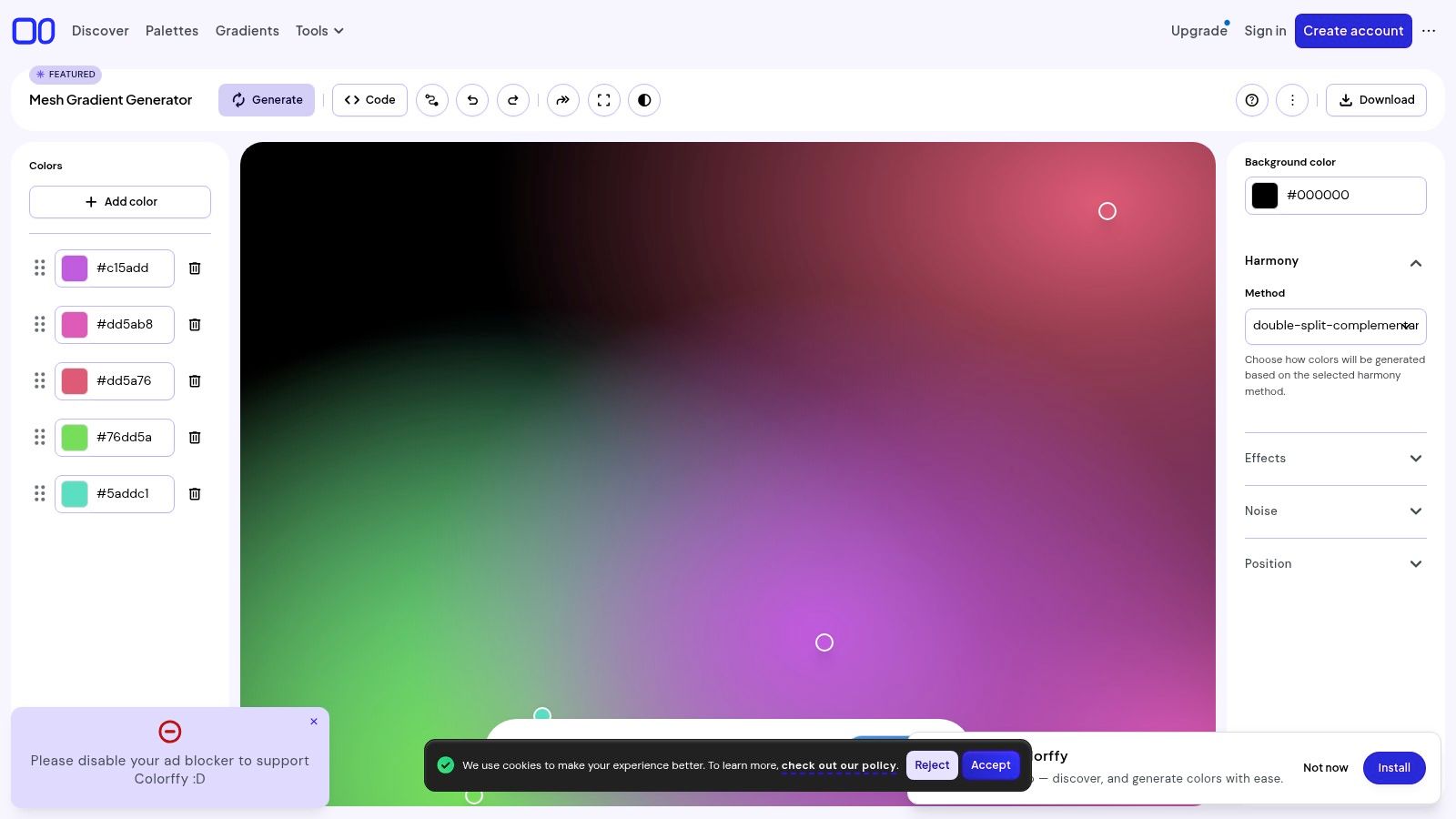
The platform is entirely free and accessible directly in the browser, eliminating the need for any software installation. Its simplicity is its greatest strength, offering controls for blur, blend, and noise to add texture and an organic feel to the gradients. For web designers and front-end developers who need to quickly generate beautiful, code-ready mesh backgrounds without the overhead of a full vector editor, Colorffy is an incredibly efficient solution.
Key Features & Assessment
Website: https://colorffy.com/mesh-gradient-generator
8. Superdesigner — Blob Generators
Superdesigner offers a suite of simple, focused tools, and its Blob Generators are perfect for rapidly producing stylish organic blobs. Instead of complex mesh controls, it provides a family of generators for different visual styles, including solid, outline, and gradient blobs. This makes it one of the best free tools to create gradient meshes & organic blobs when speed and variety are more important than granular vector control. It excels at generating assets for social media, presentations, or website backgrounds quickly.
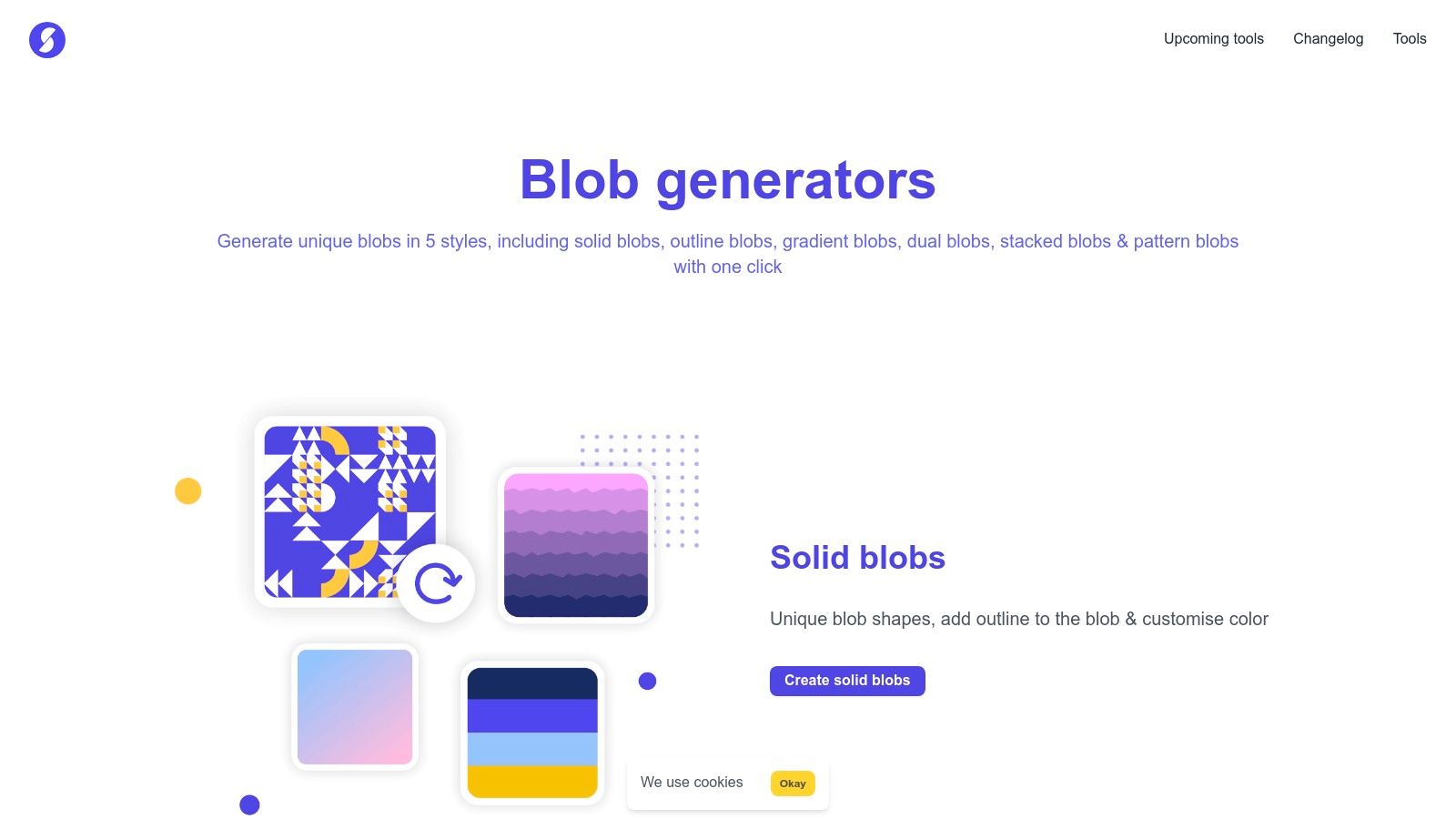
The platform is built for efficiency, allowing marketers and founders to create on-brand visual elements with just a few clicks. While the core blob generation is free, some advanced options and full access to its suite of design tools may require a paid subscription. The user interface is incredibly straightforward, focusing on one-click generation and simple color adjustments to speed up the content creation workflow.
Key Features & Assessment
Website: https://superdesigner.co/blobs
9. SVG Backgrounds — Waves & Blobs
SVG Backgrounds offers a curated library of pre-made, high-quality organic blobs and waves, making it an excellent resource for speed and convenience. Instead of building from scratch, this tool allows you to select from a collection of professionally designed assets and customize them directly in your browser. This makes it a perfect choice for marketers and developers who need a lightweight, scalable background graphic quickly without diving into a complex vector editor. Its strength lies in its simplicity and focus on ready-to-use assets.
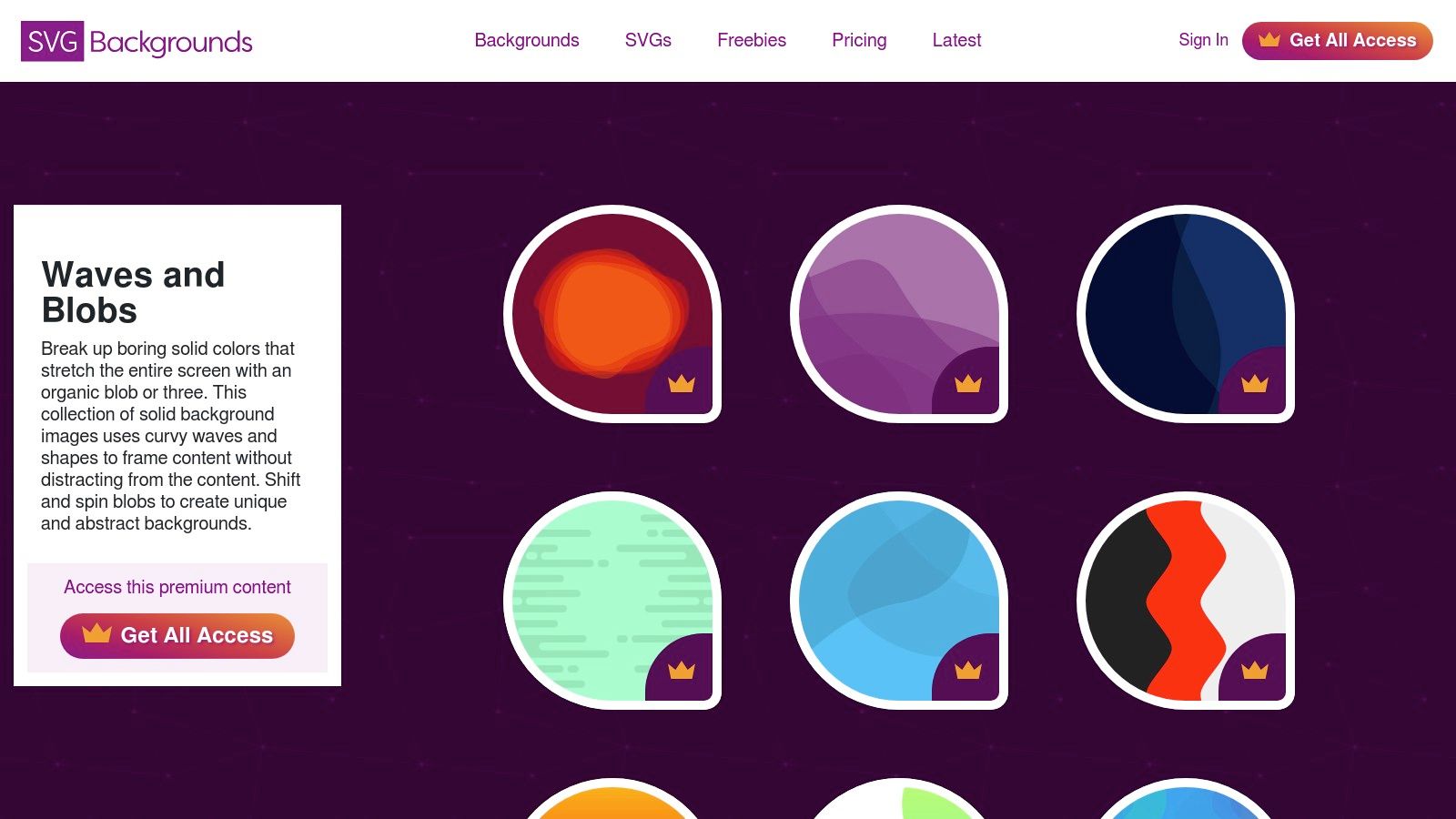
While the platform isn't a true mesh generator, it excels at providing the final product for web projects. The free assets are available with attribution, with a paid "All Access" pass unlocking the full library. This model provides an accessible entry point for creating polished hero sections, landing pages, and presentation backdrops. It’s one of the best free tools to create organic blobs when you need a polished result in minutes, not hours.
Key Features & Assessment
Website: https://www.svgbackgrounds.com/set/waves-and-blobs/
10. Filator — Gradient Generator
Filator positions itself as a modern, all-in-one gradient tool, offering a sleek interface for creating not just mesh-style gradients but also linear, radial, and conic types. Its strength lies in its speed and versatility, providing a single destination for a wide range of gradient needs. While it's excellent for generating CSS and PNG assets for web backgrounds or social media graphics, it's important to note its mesh output is a visual approximation rather than a true, editable SVG vector mesh.
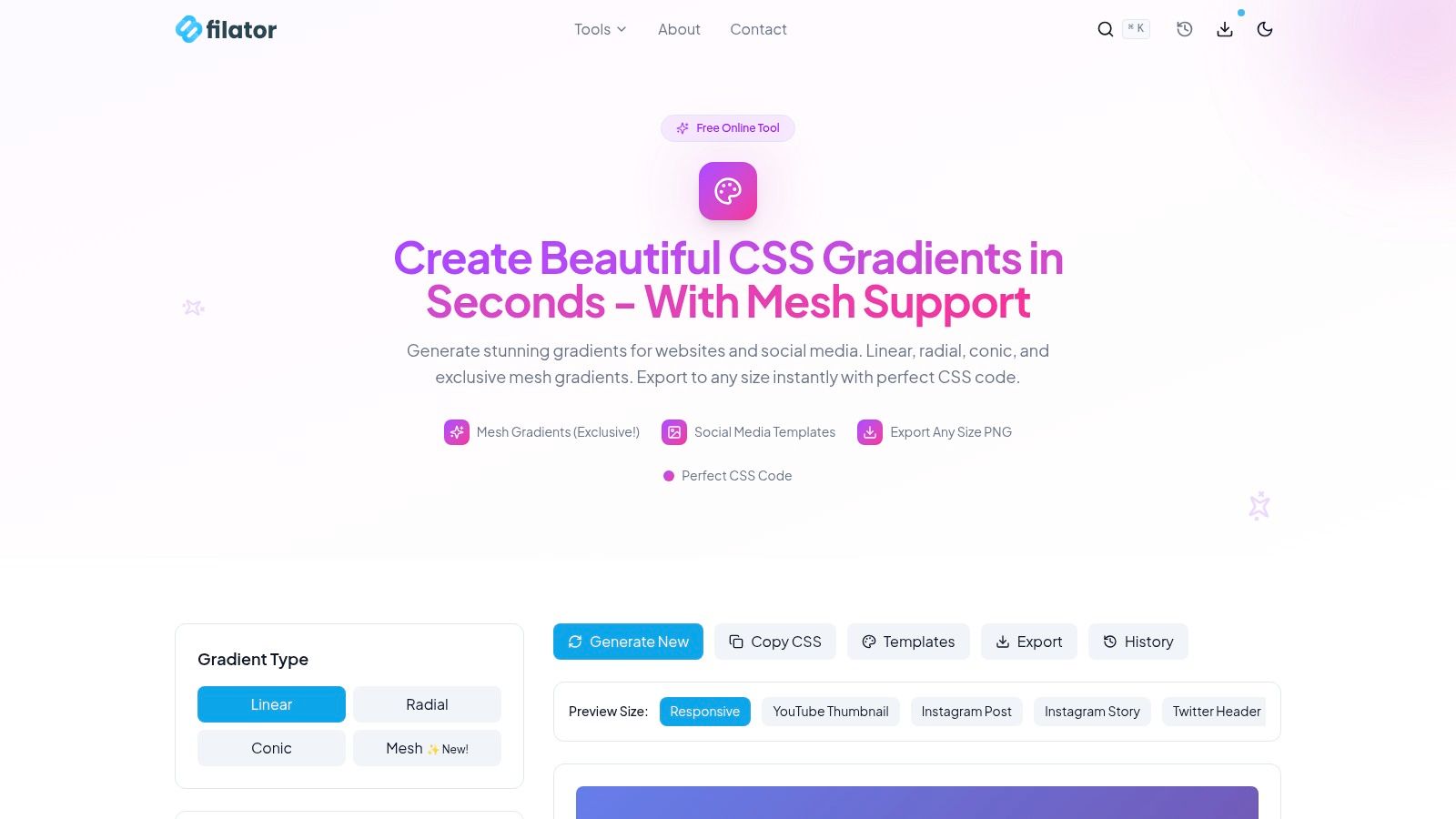
The platform is completely free, requires no sign-up, and performs quickly in the browser. This makes it a fantastic choice for marketers and developers who need to quickly generate beautiful, code-ready gradients without the learning curve of a full vector editor. For those seeking the best free tools to create gradient meshes for web use, Filator offers a direct path from concept to implementation with one-click code copying.
Key Features & Assessment
Website: https://filator.com/tools/gradient-generator
10-Tool Comparison: Free Gradient Mesh & Organic Blob Generators
Final Thoughts
Our deep dive into the best free tools to create gradient meshes & organic blobs reveals a vibrant and accessible ecosystem for designers of all skill levels. From the comprehensive vector power of Inkscape to the instant gratification of browser-based generators like Haikei and Blobmaker, the barrier to entry for creating these sophisticated visuals has never been lower. The modern design landscape is no longer limited to those who can afford premium software subscriptions; high-quality, professional-grade assets are now within reach for everyone.
This exploration has shown a clear distinction between dedicated, single-purpose generators and more robust, feature-rich platforms. Your ideal tool depends entirely on your specific workflow, technical comfort, and the ultimate goal of your project.
Choosing Your Tool: A Practical Guide
To make the right choice, consider your primary needs. Here's a quick breakdown to guide your decision-making process:
- For Maximum Control & Customization: If you need granular control over every anchor point, color stop, and curve, a full-featured vector editor like Inkscape is unparalleled. It demands a learning curve but offers limitless creative potential for unique, complex designs that generators can't replicate.
- For Speed & Efficiency: When you need a beautiful background or a set of unique shapes for a landing page right now, browser-based tools are your best friends. Haikei and Superdesigner offer incredible variety in a single interface, while specialized tools like Blobmaker and the MagicPattern Mesh Gradients generator provide focused, fast results.
- For Integrated Design Workflows: If you already work within a collaborative design environment, the Figma plugin ecosystem is the clear winner. Plugins like Blobs, Grainy Gradient, and Mesh Gradients for Figma allow you to generate and implement assets directly in your projects, eliminating the need to import and export files. This integration is a massive time-saver for product design and UI/UX mockups.
Key Takeaways for Your Creative Workflow
Ultimately, mastering the art of gradient meshes and organic blobs is about understanding the strengths of your chosen tools. Remember that these visuals are not just decorative; they are powerful communicators of mood, brand identity, and focus. A soft, pastel mesh can create a sense of calm and sophistication, while a dynamic, high-contrast blob can inject energy and excitement into a design.
As you become more proficient, you'll likely build a "toolkit" of several of these resources, using each for what it does best. You might generate a base shape in Blobmaker, import the SVG into Inkscape for fine-tuning, and then apply a complex mesh gradient. As you continue to refine your design skills, you might want to explore more comprehensive image editing resources to master various techniques. This layered approach is often where the most compelling and unique visual outcomes are born.
The world of digital design is constantly evolving, but the principles of color, shape, and composition remain timeless. Armed with this list of the best free tools to create gradient meshes & organic blobs, you now have everything you need to experiment, innovate, and create stunning visuals that captivate your audience. Happy designing





